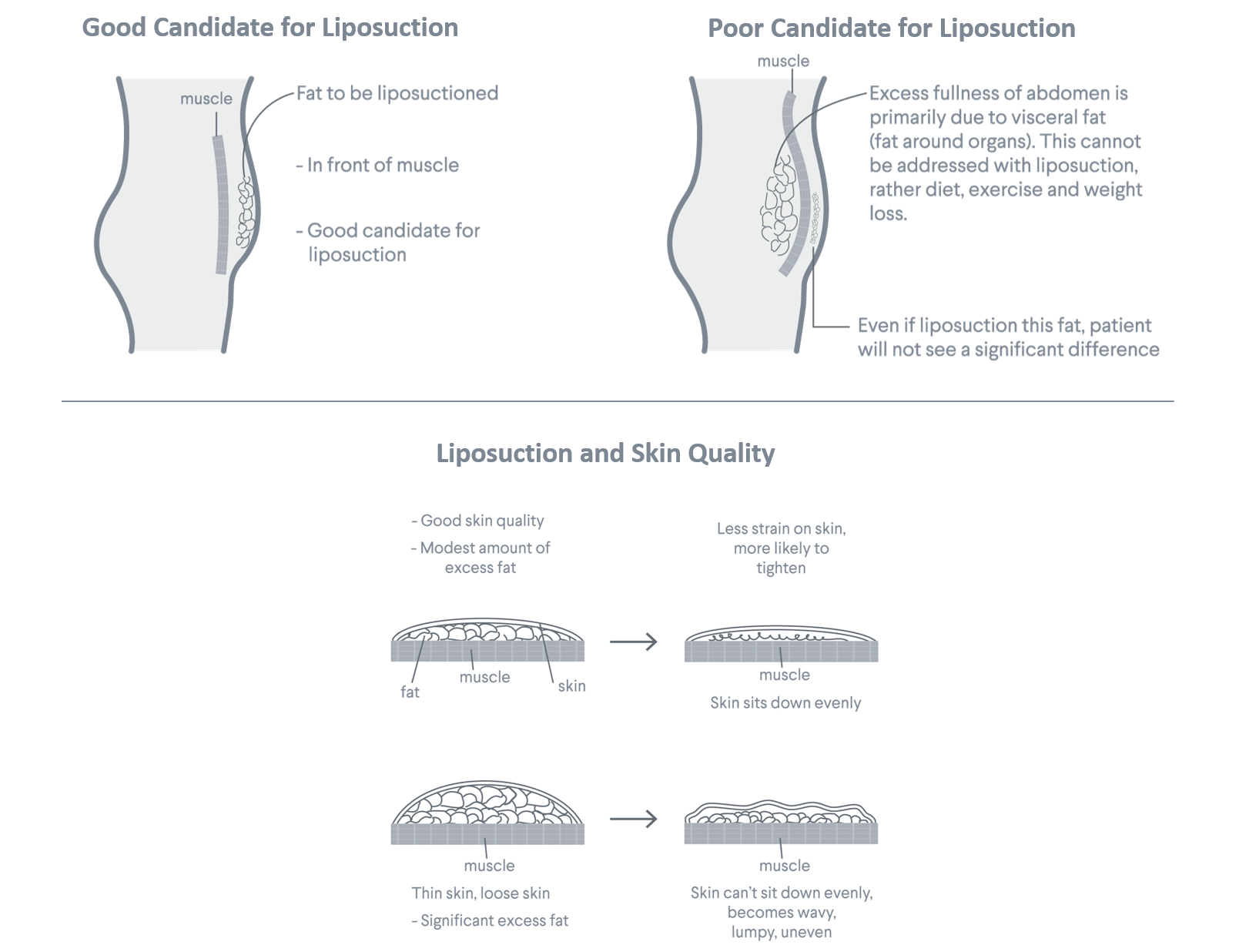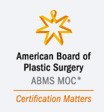

Cosmetic surgery has skyrocketed in popularity in recent years, and one of the most popular procedures is liposuction. Liposuction enables patients to target specific areas of fat that do not respond to exercise or other efforts to lose weight. With more than 220,000 procedures performed in 2015, an increase of 5 percent over 2014, it is second only in popularity to breast augmentation, which had nearly 280,000 procedures performed that same year.
What is Liposuction?
Liposuction is a plastic surgery procedure that is typically used to improve the contours of a patient’s body. It is also known as lipoplasty and liposculpture. During the procedure, the fat just below the skin is broken up and suctioned from the body. The results are long-lasting as long as the patient’s weight is stable. Liposuction does not replace healthy lifestyle habits and is not intended as a treatment for obesity. It cannot eliminate cellulite, stretch marks or other skin irregularities.
Liposuction is usually performed on an outpatient basis in a doctor’s clinic, ambulatory surgery center, hospital or other properly equipped setting. During a typical procedure, small incisions are made in the skin. Cannulas, or blunt-tipped tubes, are inserted through these incisions to target and suction out fat deposits. Nearly all liposuction techniques incorporate a tumescent solution, typically consisting of saline, epinephrine to help with bruising and lidocaine to help with discomfort, as part of the procedure. Several fat removal or suction techniques can be used, including:
- Suction-assisted liposuction, which is the traditional procedure that uses a vacuum to suction out fat
- Power-assisted liposuction, which combines suction-assisted liposuction with another tool to enhance the cannula’s motion to speed fat removal
- Ultrasound-assisted liposuction, which uses ultrasound to melt fat, allowing more fat to be removed at one time
- Laser-assisted liposuction, which uses a laser to disrupt fat cells, making the process more efficient
The procedure can be used on virtually any body part with stubborn fat deposits, including the following areas:
- Abdomen
- Thighs
- Inner knees
- Hips
- Flanks
- Back
- Upper arms
- Buttocks
- Chest
- Neckline and chin
- Saddlebags (outer thighs)
Although it is most commonly used for cosmetic purposes, liposuction can occasionally have medical benefits as well and can be used to treat gynecomastia and certain other medical conditions.
Candidates for Liposuction
The best candidates for liposuction are those who are over 18 and close to their ideal weight but who have localized areas of fat that are out of balance with the rest of the body. They should be healthy with good circulation and healthy immune systems.
Those who are not good candidates include:
• Smokers
• Those with fat behind their muscles, such as beer bellies, or visceral rather than superficial fat
• Poor skin tone or quality or skin that is loose, thin or with stretch marks present
• Liposuction can only remove so much fat at a time and is usually not intended to remove large volumes of fat. However, this can vary based on the specific surgeon, patient and needs.


Risks and Complications
When performed by a skilled doctor in a licensed facility, liposuction can typically be performed safely. However, as with any surgical procedure, some risks and complications can be associated with liposuction especially if a large area is being treated or several areas are being treated at one time, or if the patient is unhealthy.
Side effects can include bruising, numbness, soreness and swelling of the treated areas, but these are temporary. Patients who gain weight after liposuction can store fat in new areas or can develop visceral fat, which appears around organs or under muscles.
For optimal results, patients should focus on achieving their goal weight prior to liposuction, ensure they are in good health, avoid nicotine and try to maintain reasonable expectations. Liposuction can help them sculpt and contour their bodies, but it is not designed to remove large volumes of fat or to help patients lose weight.
Post-Operative Tips
Proper aftercare can go a long way towards promoting healing and reducing the risk of complications. Most patients are able to begin moving around again shortly after their liposuction procedures.
Wearing properly fitted post-surgical compression garments as recommended is essential. These garments will help minimize swelling and help skin retract during the healing process. The garments are designed from breathable fabrics so that they are comfortable to wear. The amount of time needed to wear them can vary based on the needs and preferences of individual patients.
Most patients will feel good enough to be up and moving around the day of or after liposuction. However, they may need to take it easy for the first 48 hours to give their bodies time to recuperate. After that, they can begin to incorporate some gentle exercise into their routine as it is tolerated. They can typically return to their normal routines once there is no pain or discomfort.
Nonsurgical Options
Although there is no such thing as nonsurgical liposuction, there are nonsurgical fat reduction techniques that can target and shrink fat cells. Initial results vary, and overall reviews tend to be mixed. The skin is typically not affected, and patients are able to return to their normal routine right away.
Liposuction is a more aggressive procedure with more fat able to be removed, and results are immediately visible. The skin in the treated area will typically shrink and tighten over time. While some downtime is normal, most patients are able to gradually return to their normal activities.
Although liposuction can be used alone, it can offer even more dramatic results when combined with other procedures, such as a tummy tuck or a breast lift. Seattle-based plastic surgeon Dr. Shahram Salemy, who specializes in liposuction and body contouring, believes that with the right patient selection and in the hands of a skilled surgeon, liposuction can lead to excellent results whether it is used alone or as a part of a makeover.
Read more about Liposuction and Tummy Tucks.
Related Topics:















